What does ‘organic’ hair dye really mean? Is there actually such a thing? This post breaks down the harmful chemicals found in most conventional and organic hair dyes in 2024, and what it actually means when you see the label “organic.”

By: Lisa Fennessy
IN THIS POST:
- My experience
- What’s in hair dye?
- Ingredients to consider
- Is organic hair dye cleaner than conventional hair dye?
- Hair dye alternatives
- Organic hair dye FAQ
My experience
For 18 years, I dyed my hair and in 2016, I was dyeing it as frequently as every. four. weeks. I had been okay with dyeing my hair as my one “cheat.” You know, live healthy, buy organic, clean with vinegar and brush with baking soda…all that jazz, BUT my hair? Oh that’s only once a month and this girl needs her hair did, so it was my one exception.
Then, in January 2016, I ditched the conventional dye to try Hairprint, the cleanest hair dye on the block. I used it for 14 months (read my 7 month and 11 month updates for more) and then decided to GO GRAY. Like, totally gray.
What I found was a generous and welcoming community of women who also wanted to learn how to go gray, and share tips about their experience.
But this post is about organic hair dye, not going gray (even though they’re super related).
RELATED: See my entire going gray journey, including Why I stopped dyeing my hair, 3 months, 8 months and one year of gray growth!

What’s actually in hair dye?
Before I went gray, I set out to find the cleanest hair dye that actually works because commercial hair dyes are so toxic that some people have used them to commit suicide; they’re cheap, fast and deadly.
And those deadly chemicals sit on your scalp for 45 minutes making their way to your bloodstream and making pit stops at all of your organs while you sit and read how J. Law connects to Kevin Bacon through six degrees of separation. Straight up criminal.
Obviously we are not choosing to drink our hair dye, so it can’t be too bad right? Well, let’s start with the scalp. The scalp is one of the most absorbent parts of the body—it’s like a sponge that sops up whatever you put on it. As hair dye sits on your scalp, chemicals are absorbed through your skin and into your bloodstream.
Some of these chemical toxins are peed out, but some remain in the body for months, maybe longer.
So why are companies allowed to put harmful toxic chemicals in a box and encourage people to essentially poison themselves?
The ugly truth is no one is really regulating hair dyes. In 1938, The Food, Drug and Cosmetic Act passed, which put an unregulated cosmetics industry under federal regulation. There were two exceptions to this act: soap and hair dye.
This act has remained pretty much untouched which means no one is running the show and to this day, coal-tar dyes do not require FDA certification. Neither the FDA nor any other entity is telling these companies they are not allowed to use certain chemicals and no one is checking to see what is on shelves to make sure products meet certain standards. Chemicals and formulations are like the typical American criminal—innocent until proven guilty.
The self-regulated industry is compounded by the minuscule amount of scientific-based evidence about the effects of hair dye chemicals in the human body because there’s a virtually endless list of variables. A control group and a test group are impossible to isolate and no studies have lasted through entire lifespans.
It’s like when the tobacco companies “proved” that smoking didn’t cause cancer because they set up a three-month study and at the end of it, the subjects did not have lung cancer. (Eye roll.)
And, even when the FDA tries to step in, this happens:
“In 1979, the FDA tried to insist that hair-dye manufactures place the following label on their products: ‘Warning: Contains an ingredient that can penetrate your skin and has been determined to cause cancer in laboratory animals.’ The ingredient referred to is 4-MMPD, 4-methoxy-m-phenylenediamine, a dye with a structure very similar to PPD that, according to the FDA, showed sufficient scientific evidence of being carcinogenic. Manufacturers disagreed and threatened to sue the FDA if they pressed for the label. The FDA backed down. A few years later, manufacturers removed the carcinogenic compound from their formulas, while maintaining the 4-MMPD was safe.” – The Atlantic Magazine
Toxic hair dyes are happening, the government can’t stop it and consumers are perpetuating it because we keep buying and dyeing. So, since the FDA is putting the onus on the consumer to be informed and follow the directions, let’s dive a little deeper together.
RELATED: The best all-natural purple shampoo for gray hair (and more)

Ingredients to consider when buying organic hair dye
What makes hair dye work and can you really have an ORGANIC hair dye?
It’s all about the active ingredients. There are two heavy hitters to consider when you’re reading hair dye labels (but don’t switch tabs YET, because there are more than two ingredients you need to know):
- PPD is a coal-tar derivative which is allergenic, mutagenic and highly toxic. For 125 years, PPD has been the extent of hair dye technology and beauty manufactures have yet to accept a permanent hair-color formula without PPD…
- …or or its related compound, p-aminophenol. To permanently change the color of hair, a product must be able to penetrate the cuticle to deposit or remove color in the cortex and these chemicals do this.
Bottom line, this means that if your organic hair dye is working, it is employing these toxic chemicals (and therefore is not nontoxic).
Companies who sell “organic” hair dyes do use organic ingredients, but those ingredients are just the extra bells and whistles. The industry calls these “fairy dust” ingredients—they have no impact on color or outcome. They’re used to draw the buyer in and let them believe that the product is safer, when in reality these are all inactive ingredients; the product would perform the same with or without them.
But, there are still more ingredients, which make an appearance in conventional and “organic” hair dyes, that we should put under the microscope:
Resorcinol
Resorcinol is obtained from various resins. Irritating to the skin and mucous membranes. May cause allergic reactions particularly to the skin. The FDA issued a notice in 1992 that resorcinol has not been shown to be safe and effective, and the EU requires a warning label on products containing resorcinol.
Also listed as but not limited to: 1,3-BENZENEDIOL; 1,3BENZENEDIOL; 3-HYDROXYPHENOL; CI DEVELOPER 4; M-DIHYDROXYBENZENE; M-HYDROQUINONE; M-PHENYLENEDIOL; OXIDATION BASE 31; RESORCIN; 1,3-BENZENEDIOL; 1,3-DIHYDROXYBENZENE.
Aminophenol
Derived from phenols. Solutions on the skin have produced restlessness and convulsions in humans as well as skin irritations. May also cause rashes, sensitization and inhalation may cause asthma. Mutagenic in lab tests. Metabolized similarly to Tylenol and can effect the liver. Listed as a 5/6 on EWG’s Skin Deep Database.
Also listed as but not limited to: m-AMINOPHENOL, 3-AMINO- PHENOL; 3-AMINOPHENOL; 3-HYDROXYANILINE; 3-HYDROXYBENZENAMINE; CI 76545; M-HYDROXYAMINOBENZENE; M-HYDROXYPHENYLAMINE; PHENOL, 3-AMINO-; PHENOL, 3AMINO; 3-AMINO-1-HYDROXYBENZENE; 3-AMINOPHENOL; p-AMINOPHENOL, 4-AMINO- PHENOL; 4-AMINO-1-HYDROXYBENZENE; 4-AMINOPHENOL; 4-HYDROXYANILINE; 4-HYDROXYBENZENAMINE; 4-HYDROXYPHENYLAMINE; CI 76550; P-AMINO- PHENOL; PHENOL, 4-AMINO-; PHENOL, 4AMINO; PHENOL, P-AMINO-.
Phenols
A disinfectant and anesthetic for the skin. Ingestion of even a small amount may cause nausea, vomiting and circulatory collapse, paralysis, convulsions, coma and green urine. Death from respiratory failure. Fatalities have been reported from ingestion of as little as 1.5 grams. Fatal poisoning can occur through skin absorption. Scores a 7 on EWG’s Skin Deep Database.
Also listed as but not limited to: BENZENOL; CARBOLIC ACID; HYDROXYBENZENE; LIQUID PHENOL; OXYBENZENE; PHENOL,; PHENYL ALCOHOL; ACIDE CARBOLIQUE (FRENCH) ; BENZENOL; CARBOLIC ACID; CARBOLSAURE (GERMAN).
Phenylenediamine (PPD)
May produce eczema, bronchial asthma, gastritis, skin rash and death. Can cross react with many other chemicals including azo dyes used in temporary color. It has caused cancer in some animal experiments. The FDA tried to ban and require labeling for this ingredient in hair dyes but the industry won out citing the Food, Drug and Cosmetics Act of 1938 exempting hair dye from the FDA’s jurisdiction. Banned from cosmetic use in EU and Canada. Listed as a 7/8 on EWG’s Skin Deep Database.
Also listed as but not limited to: m-PHENYLENEDIAMINE, 1,3-BENZENEDIAMINE; 1,3-DIAMINOBENZENE; 1,3-PHENYLENEDIAMINE; 1,3BENZENEDIAMINE, DIHYDROCHLORIDE; CI 76025; DEVELOPER 11; M-AMINOANILINE; 1,3-BENZENEDIAMINE HYDROCHLORIDE; 1,3-DIAMINOBENZENE DIHYDROCHLORIDE; 1,3-PHENYLENEDIAMINE DIHYDROCHLORIDE; 3-AMINOANILINE DIHYDROCHLORIDE; p-PHENYLENEDIAMINE, 1,4-BENZENEDIAMINE; 1,4-PHENYLENEDIAMINE; 1,4BENZENEDIAMINE; CI 76060; OXIDATION BASE 10; P-AMINOANILINE; P-DIAMINOBENZENE; 1,4-BENZENEDIAMINE (9CI) ; 1,4-DIAMINOBENZENE; 1,4-PHENYLENEDIAMINE; 4-AMINOANILINE.
1-Naphthol
Used as an antiseptic. Causes severe eye and skin irritation. Toxic by ingestion and skin absorption. When applied to the skin in hair dyes, it is not teratogenic or carcinogenic. Listed as a 7/8 on EWG’s Skin Deep Database.
Also listed as but not limited to: 1-HYDROXYNAPHTHALENE; 1-HYDROXYNAPTHALENE; 1-NAPHTHALENOL; 1-NAPHTHYL ALCOHOL; 1NAPHTHALENOL; ALPHA-NAPHTHOL; CI 76605; OXIDATION BASE 33; 1-HYDROXYNAPHTHALENE; 1-NAPHTHALENOL; ALPHA-HYDROXYNAPHTHALENE.
Ethanolamines
Strong bases. Used as a substitute for ammonia. Very large quantities are required for lethal oral doses in mice. Rates a 5/6 on the EWG’s Skin Deep Database.
Also listed as but not limited to: 2-AMINO- ETHANOL; 2-AMINOETHANOL; 2-HYDROXYETHYLAMINE; ETHANOL, 2-AMINO-; ETHANOL, 2AMINO; MEA; MONOETHANOLAMINE; 2-AMINOAETHANOL (GERMAN) ; 2-AMINOETANOLO (ITALIAN) ; 2-AMINOETHANOL (OSHA) ; 2-HYDROXYETHYLAMINE.
Coal Tar
This ingredient causes cancer in animals. Not recommended for use in any product that sits on the skin for over 20 minutes. Contains many constituents including benzene, xylenes, naphthalene, pyridine, quinoline, phenol and creosol. Rates a 10 on EWG’s Skin Deep Database as a known carcinogen.
Also listed as but not limited to: COAL TAR SOLUTION; TAR, COAL; CARBO-CORT; COAL TAR SOLUTION USP; COAL TAR, AEROSOL; CRUDE COAL TAR; ESTAR (SKIN TREATMENT) ; IMPERVOTAR; KC 261; LAVATAR; PICIS CARBONIS.
Also, here is a list of 22 hair dye chemicals banned by the EU:
- 6-Methoxy-2,3-Pyridinediamine and its HCl salt
- 2,3-Naphthalenediol
- 2,4-Diaminodiphenylamine
- 2,6-Bis(2-Hydroxyethoxy)-3,5-Pyridinediamine
- 2-Methoxymethyl-p-Aminophenol
- 4,5-Diamino-1-Methylpyrazole and its HCl salt
- 4,5-Diamino-1-((4-Chlorophenyl)Methyl)-1H-Pyrazole Sulfate
- 4-Chloro-2-Aminophenol
- 4-Hydroxyindole
- 4-Methoxytoluene-2,5-Diamine and its HCl salt
- 5-Amino-4-Fluoro-2-Methylphenol Sulfate
- N,N-Diethyl-m-Aminophenol
- N,N-Dimethyl-2,6-Pyridinediamine and its HCl salt
- N-Cyclopentyl-m-Aminophenol
- N-(2-Methoxyethyl)-p-phenylenediamine and its HCl salt
- 2,4-Diamino-5-methylphenetol and its HCl salt
- 1,7-Naphthalenediol
- 3,4-Diaminobenzoic acid
- 2-Aminomethyl-p-aminophenol and its HCl salt
- Solvent Red 1 (CI 12150)
- Acid Orange 24 (CI 20170)
- Acid Red 73 (CI 27290)
RELATED: What ingredients does TNK always say “no thanks” to? Check these out.
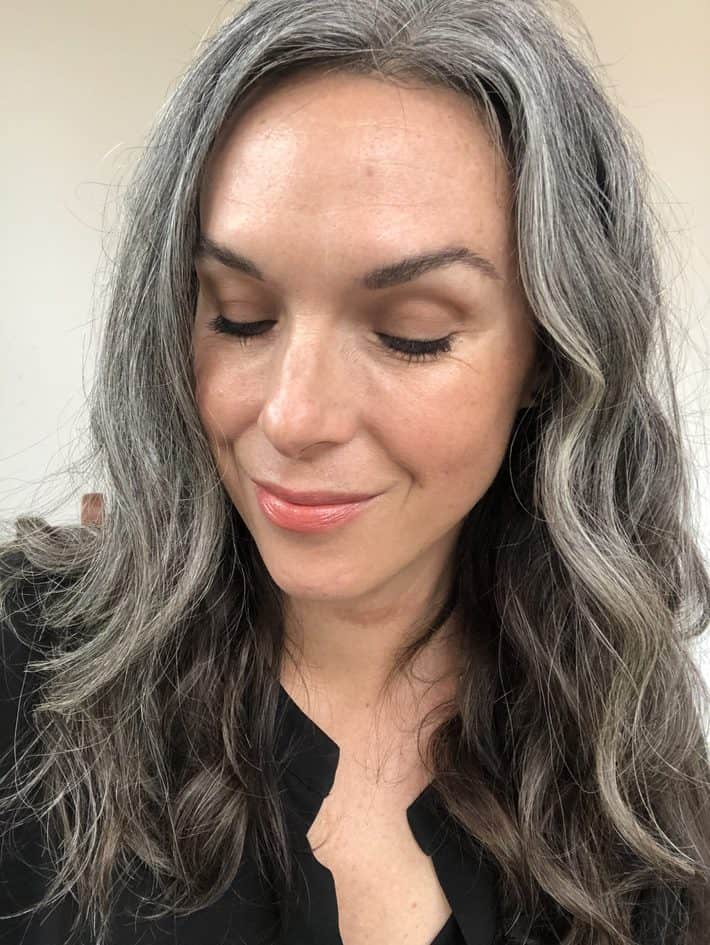
Is “organic” hair dye cleaner than conventional hair dye?
Where do we go from here? First, let me say this is totally an individual decision and everyone has the right to color their hair without being judged. This is a super hard decision to make for some, myself included, because the outcome is so visual. Our goal is for you to be informed of all the information, so you can make the best decision FOR YOU. Full stop.
The tipping point here is education and understanding the difference between marketing lingo vs. what’s actually in products.
It’s what the company is NOT saying—that’s what buyers really need to know.
For example, some companies will boast that their product is “ammonia free” or “PPD free.” First of all, ammonia is an archaic ingredient. It is still used, but it’s not a staple ingredient like it used to be. Parallel to buying chicken, when the label says “hormone free”—hormones are not used in chicken anyway.
It’s like saying there is no steak in your ice cream…yeah we know!
So, what are they using to replace ammonia? Is it ingredients like ethanolamine and triethanolamine? And are they also using chemicals like PTD (para-toluene diamine) or p-aminophenol as a substitute for PPD? If the answers are yes and yes, these formulas could be just as questionable as “conventional” hair dyes.
“It’s probably true that if these materials (PPD and PTD) were invented today, their use in cosmetics would not be permitted but they remain in use…as no effective replacements have been found.”
Royal Society of Chemistry
I’m not here to convince you to dye your hair or not. That’s is 100% up to you and to feel good about it either way. The one point that I really want to drive home here is when a hair dye is labeled “organic” or claims to be “natural,” don’t be fooled into thinking you are getting a “healthy” alternative. I hear so many people say, “I know it’s not perfect, but at least it is a little better.”
It’s not really. It’s all the same active ingredients, just boxed and labeled differently.
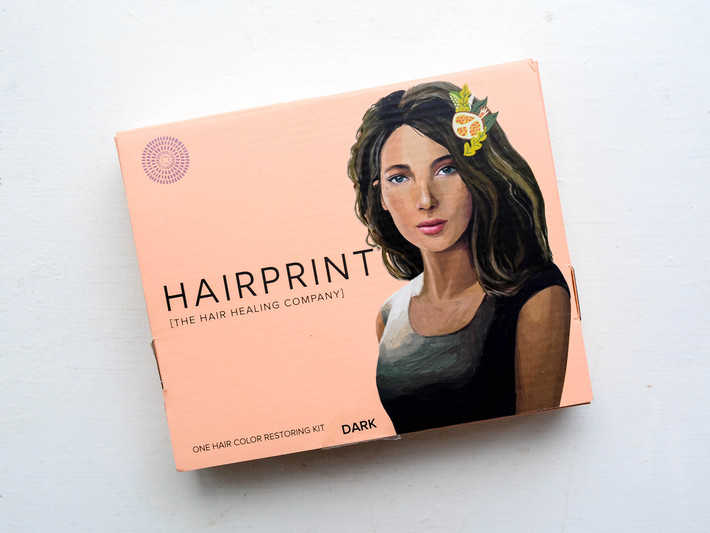
Other hair dye alternatives
What are some other options? Well there are a couple. Supplements, henna and HairPrint, to name a few.
I’m usually game for trying organics and natural alternatives, but the more I looked into henna, the more I was seeing things like, leave it on for 4-5 hours or OVERNIGHT (the ingredients look fabulous but lets be honest, overnight?! No thanks). Many reviewers said the color outcome was unpredictable and it didn’t last. Ruth Winter, author of A Consumers Dictionary of Cosmetic Ingredients says, “They are more difficult to apply, less reliable than manufactured dyes, and less predictable as far as color is concerned.” The reason for this is henna dyes only coat the hair temporarily; they don’t alter the hair like permanent dyes.
Or maybe supplements? Some of my readers mentioned diatomaceous earth, Brahmi Amla or another herbal remedy like He Shou Wu. While these may work, I’m personally a fan of less when it comes to supplements. I am a fan of instant gratification, though my going gray journey was NOT instantaneous (still, so worth it).
HairPrint was the closest I came to finding the golden ticket of organic hair dye. And even after that great experience, I chose to embrace my gray.
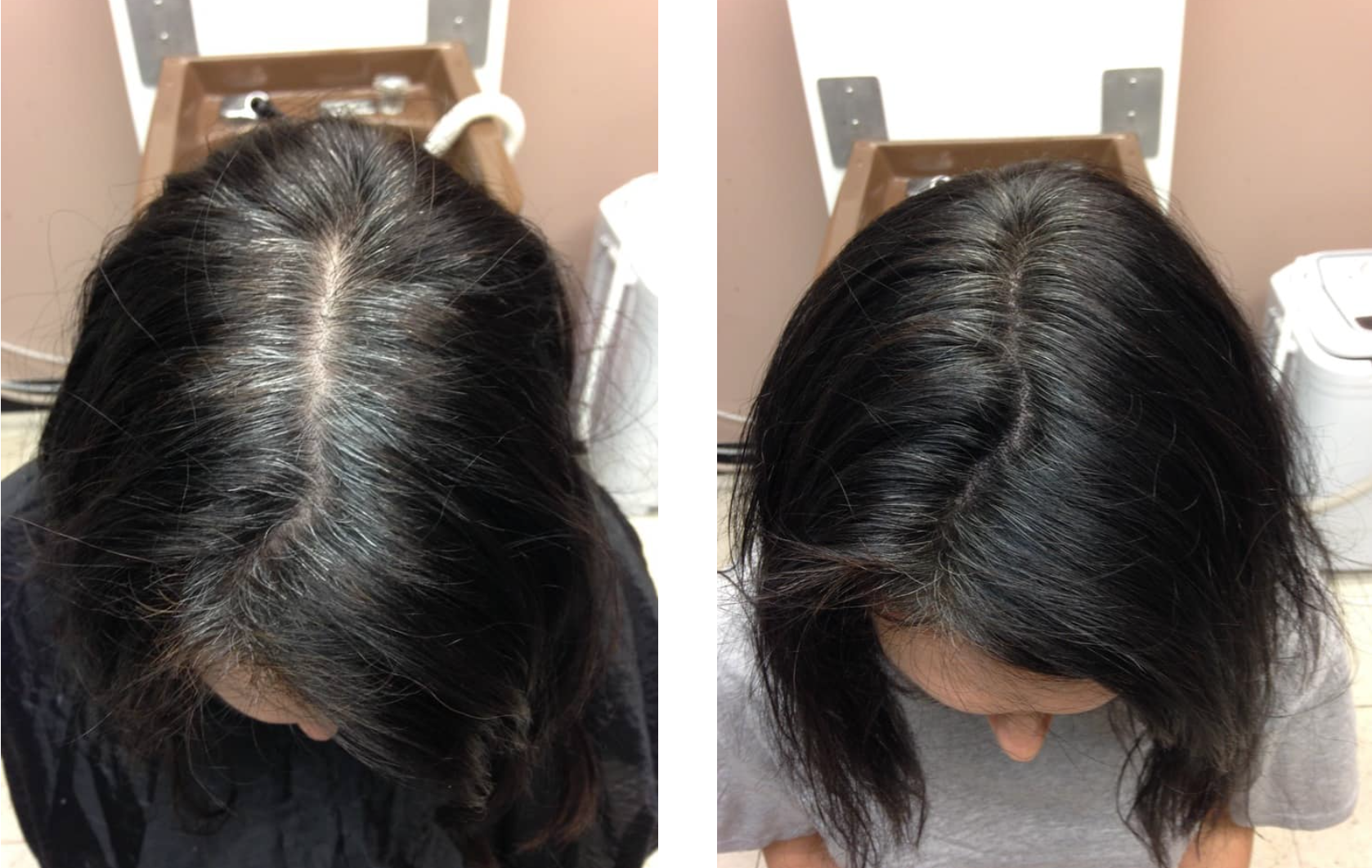
Organic hair dye FAQ
It’s not really. It’s all the same active ingredients as conventional dye, just boxed and labeled differently. Read my full study on organic hair dyes here.
HairPrint was the closest I came to finding the golden ticket of organic hair dye. Other things to try are supplements like He Shou Wu, and henna hair tints.
Organic and natural hair dye alternatives are the safest ones based on the ingredient list. We’ve found HairPrint, a dye alternative, to be the best for coloring hair.
It’s not really. It’s all the same active ingredients as conventional dye, just boxed and labeled differently. Read my full study on organic hair dyes here.
What’s your take on organic hair dye?
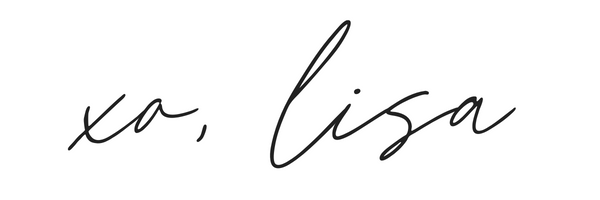
*This ingredient information was referenced from “A Consumer’s Dictionary of Cosmetic Ingredients,” by Ruth Winter, M.S. unless otherwise stated.

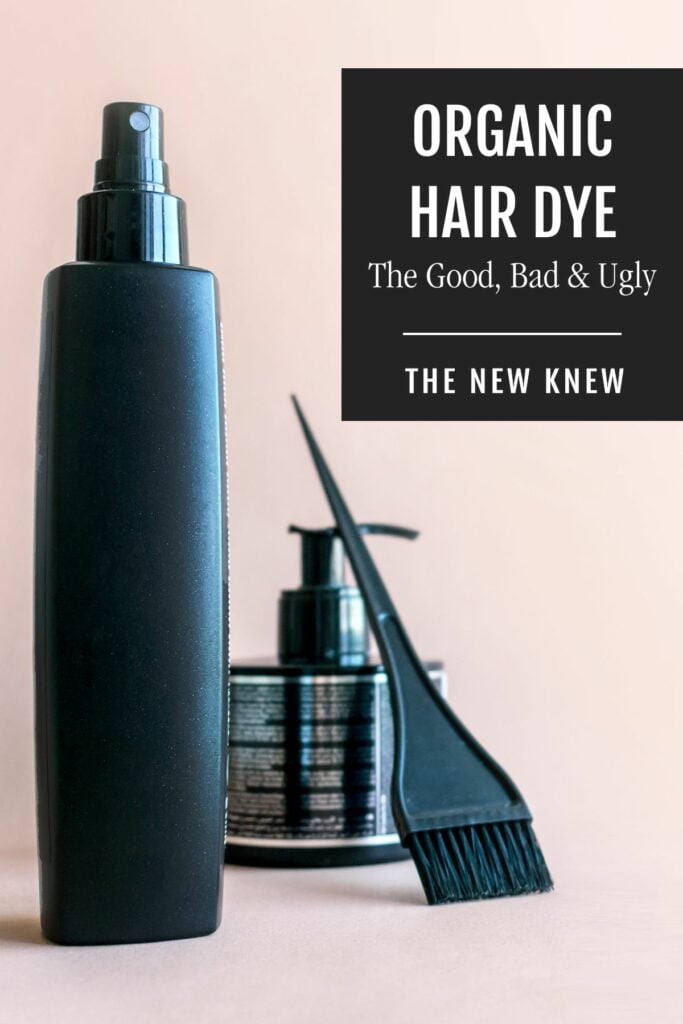
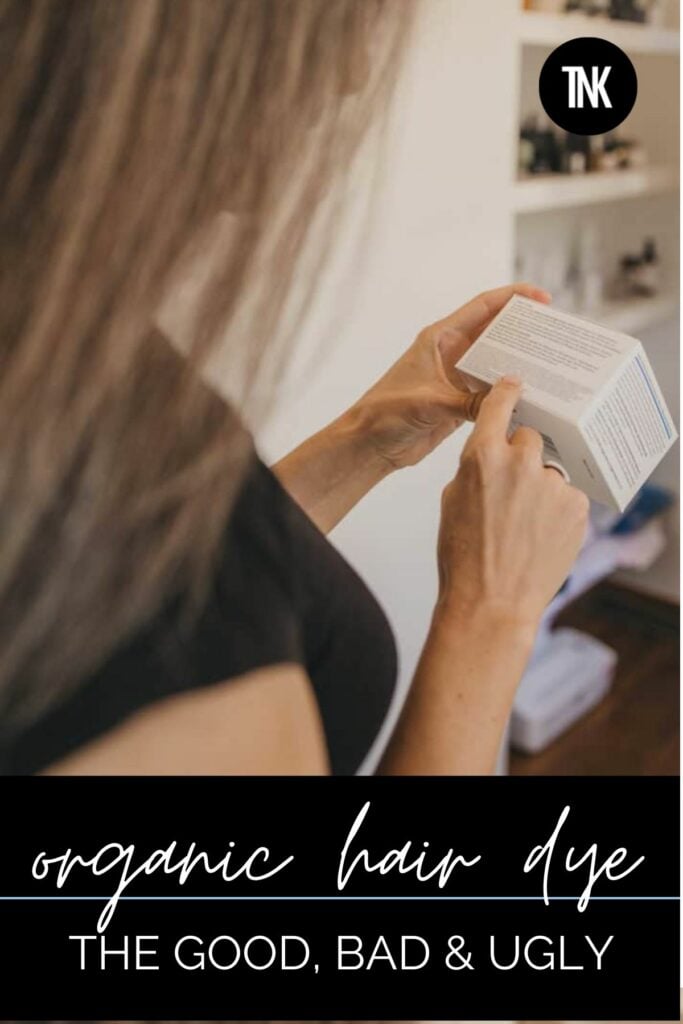
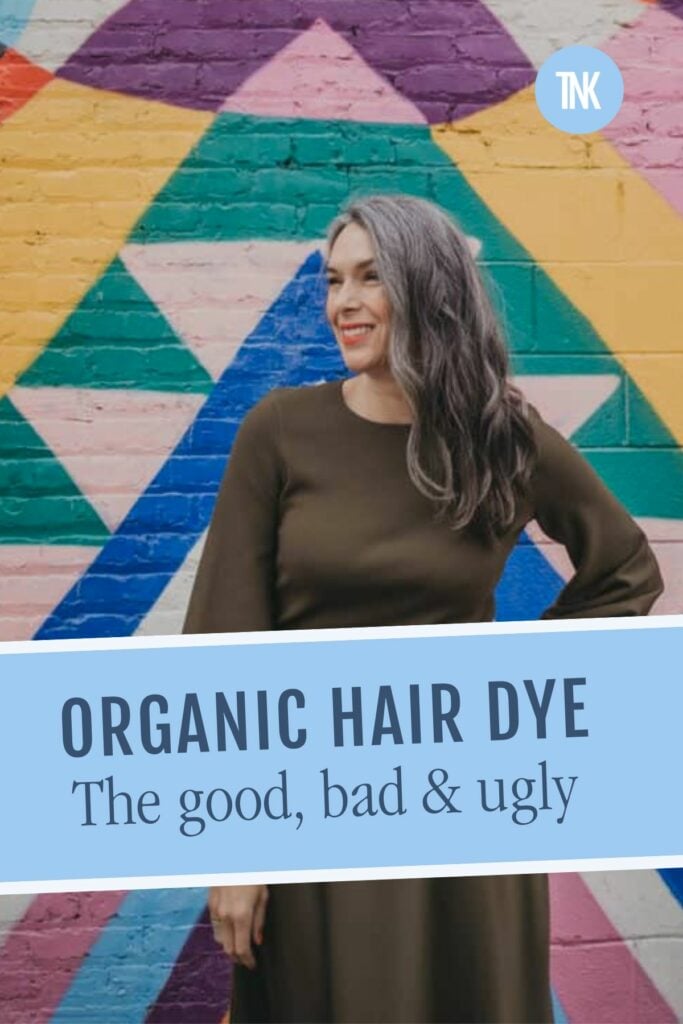
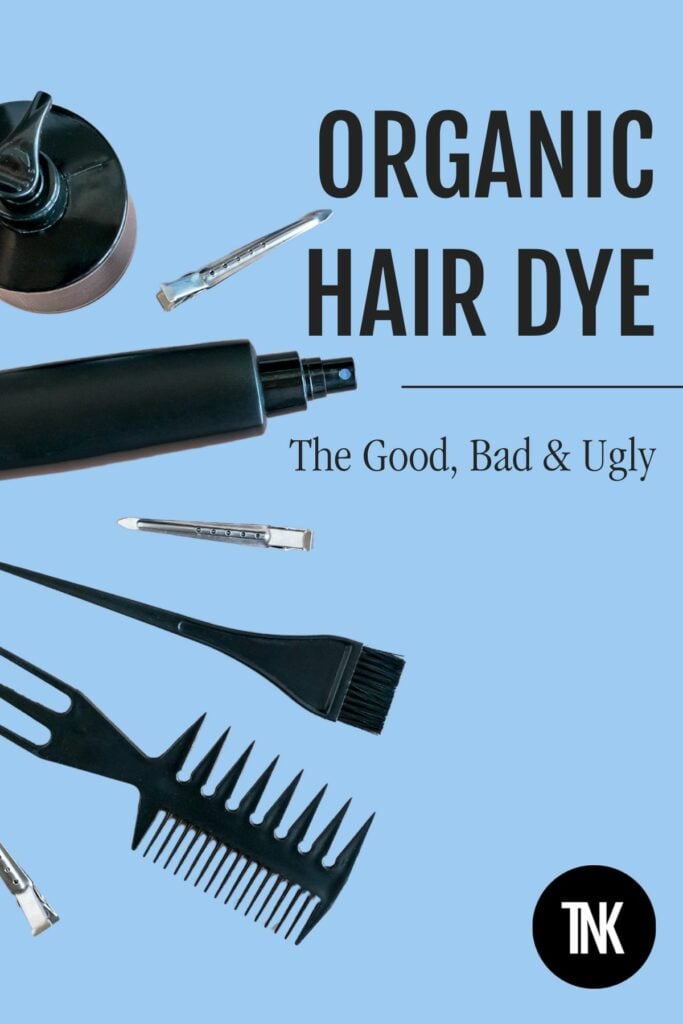
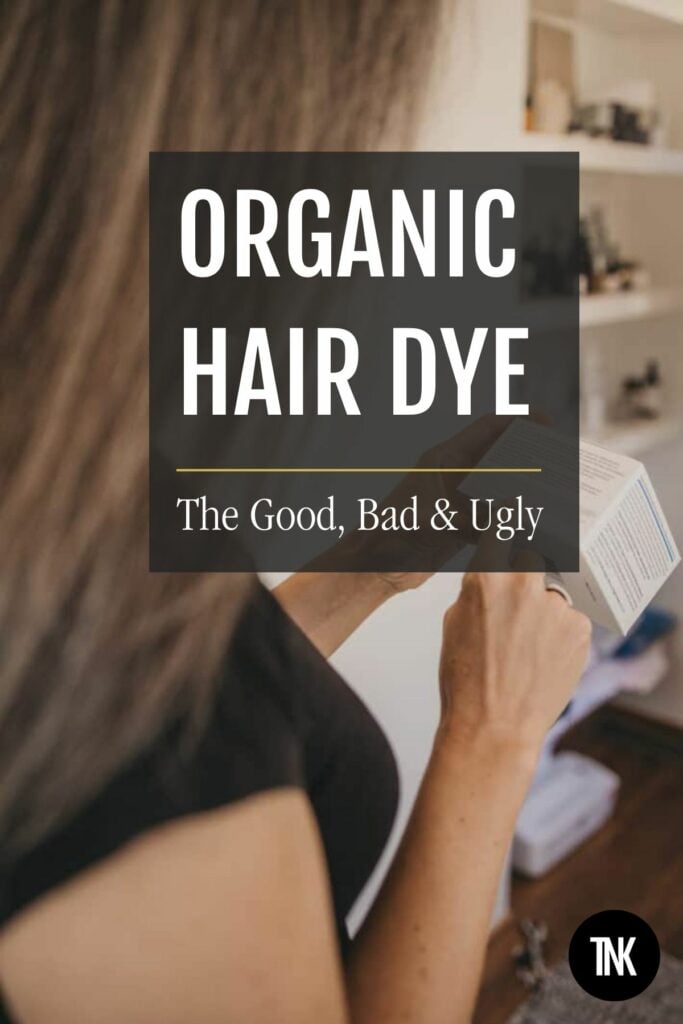
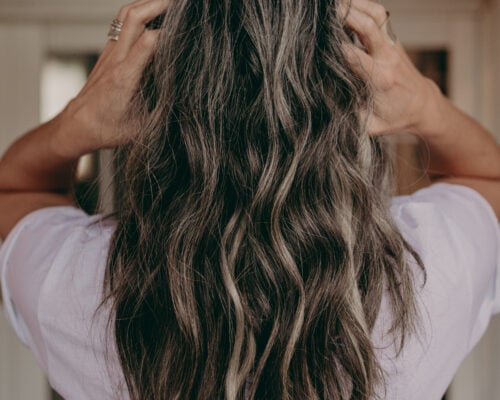
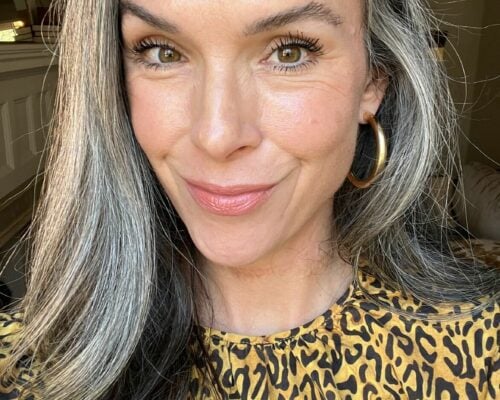
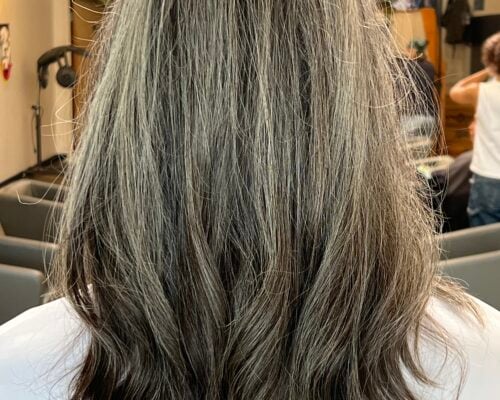
Raylene
May 11, 2021I really enjoyed reading this article – especially your point about consumers perpetuating the problem by purchasing these hair products. I was however dismayed to see your page plastered with Advertisments that promote these very same products that are unhealthy for us . I was a bit disheartened to be honest 🙁
Lisa
May 13, 2021Oh my gosh, that is such a sore spot for us. Ad revenue is one of the main revenue streams for the blog. It’s one of the reasons we are able to continue to create and publish free content that is valuable to our readers. We have some control over what TYPE of ads are shown but not complete control. I wish it was a viable option for us to turn off ads altogether but it would mean staff cutbacks, less resources and would really hurt our mission. Thank you for your feedback and understanding. We really appreciate your readership and support. xo, Lisa
Mandy
May 14, 2021I use henna and love it!!! It makes my grey look like a natural highlight and leaves my hair shiny and thick!! Will never use hair dye again❤️
Lisa
May 20, 2021Love that you found what works for you! xo, Lisa
Komal
May 17, 2021Good and very nice information
Aspen R Marino
May 18, 2021Hello! Are used to love hair print back in the day, but the last few times I’ve used it it has only lasted about a week, and it’s really dried out my hair. I know you talk about henna , and supplements, but are there any other hair dyes you could recommend? Besides hair print?
Lisa
May 20, 2021Hi Aspen! Gosh that is such a bummer. I haven’t used HP in years so I can’t speak to the formula now but I know they are always working to improve it. That being said, I don’t know of any comparative safer hair dyes. BUT if you are looking to dye your hair, I would say OWAY or Organic Color Systems is the best way to go. I have heard from some hair dressers (although I have not officially confirmed this) that even though OWAY use the same ingredients that other conventional dyes use, it’s in a less percentage—and that would make an impact for sure. I used OWAY for about a year after I stopped using HairPrint and before I stopped dying my hair all together so that was my personal choice of a brand to use. Many salons carry it. xo, Lisa
Jamie
May 29, 2021Every hair stylist is cringing. You dye Easter eggs, you COLOR hair. There is no such thing as completely chemical free hair color. If you are dumb enough to put henna on your hair, please don’t expect a deal when you have to spend 3 separate 5 hour visits at a salon to strip that shit out of your hair and fix the damage you’ve done. You’re not an expert. The air you breathe and the cell phone you’re holding in your hand right now does more damage than hair color. Enough with this hipster bullshit.
Lisa
June 24, 2021I love this lady – lol. Lisa
Jess
August 15, 2021I couldn’t read the article due to the pop up advertisements..
Lisa Fennessy
August 15, 2021Ugh…so sorry! Sometimes if you pull down on your mobile screen to refresh the page, the opt-in will close. You can also try accessing it from desktop. Sorry for the trouble! xo, Lisa
Arreeya
August 30, 2021Hi Lisa, thanks for the article. Some people say henna has heavy metals etc. Would appreciate your view regarding safety of henna. Thank you.
Lisa Fennessy
September 16, 2021Hi Arreeya! I would say right off the bat, henna is a better option than traditional hair dye. I haven’t specifically looked into the heavy metal content for henna. I’m also wondering if that would vary from brand to brand. Or even if some brands test for heavy metals? I know I’ve seen USDA Certified Organic henna too – I would start by asking a conscience brand like that if they also test for heavy metals and see what they say. Hope this helps! xo, Lisa
Silvia
September 15, 2021Hi Lisa, really good information. What is your opinion about Aveda hair color in a salon? It also claims to be organic.
Thanks, Silvia x
Lisa Fennessy
September 16, 2021Hi Silvia! Thanks for reading! So if a hair dye is working, it’s because it’s powered by actives like resorcinol, PPD, PTD, p-aminophenol..it has to be. There has been no new hair color technology invented over the past century. So all hair dyes are working because of these actives. There are concerns listed in the post for all of these ingredients. So then the question becomes, well, which brand uses the least percent of these active ingredients? That, unfortunately is a question I can’t answer. Although, my hairdresser says OWAY uses the lowest percentages of these actives but I can’t confirm or deny. Some brands consider percentage information proprietary so it’s hard to really get a good sample set to look at. Although I would love to know the answer to this question too.
Sarah
October 16, 2021What hair dye brand do you think are the Safest to use?
Lisa Fennessy
October 16, 2021Hi Sarah! If you are looking for a salon formula, check out OWAY. If you are looking for an at home solution, check out Hairprint (here are my before and afters) and Radico….Hope this helps! Lisa
Lea Ann Ouimet
November 8, 2021Have you heard of green hare mud? The ingredient list appears all natural?
Lisa Fennessy
November 12, 2021Hi Lea Ann! I haven’t, can you link it here? Thanks! Lisa
Lea Ann Ouimet
November 12, 2021Hi Lisa,
Here is the link to Green Hare Mud: https://greenhare.com/
I’d love to hear your thoughts!
Thank you 🙂 Lea Ann
Kristi
December 2, 2021The green hare mud product has henna and indigo listed in the ingredients for the dark brown.
Lisa Fennessy
December 13, 2021Interesting. Are those the only ingredients listed? If so, it’s henna then…not conventional hair dye. ; ) xo, Lisa
Hannah Atrchi
December 20, 2021I have been lightening my hair super blonde with the Blonde me Lightener for 3 years! Is that better than hair color/dye???
I also use a toner but yeah…. I love my Lightner!!
Help!! Let me know. Thank you, Hannah
Lisa Fennessy
January 2, 2022Hi Hannah! I’m not sure if I found the product you are talking about here but if it’s a shampoo treatment then there is a good chance it has less harsh chemicals than hair color. Hope this helps! Lisa
Alice
January 1, 2022Hairprint is not an organic dye. It’s a lengthy time consuming process that is supposed to bring back your natural pigment. So far it is only for darker hair
Lisa Fennessy
January 2, 2022Hi Alice! Yes! I used Hairprint exclusively for 14 months—all my before an after pics are on the blog. PLUS, I also got a chance to travel to Massachusetts to talk to Dr. John Warner, the scientist who discovered this technology. AND, I was invited to Sausalito, California to meet Paul Hawken, the owner of the company at the time. In Sausalito, I was also taught how to apply Hairprint effectively at the Hairprint studio. I really got an inside look at how this product works. This post is a great post to start with if you want to follow along. xo, Lisa
Vibha Rai
February 2, 2022Hi Lisa,
I am allergic to hair dye and used henna then switched to Hair print. I wouldn’t recommend HP, have used only few times, losing lots of hair, seeing bald spots, brittle hair and color lasted for only a week even though i had hair print plus.
I am really in search for safe hair color, henna takes lot of time and it’s does not last long. Have even gone to salon and done patch test but no luck.
Thanks you
Lisa Fennessy
February 4, 2022Thank you so much for this! Be sure to keep us posted if you find something. xo, Lisa
Katherine
March 23, 2022Hi Lisa! I saw you recommend Radico above for at home Henna… is this the brand you recommend most for gray coverage that wont turn dark brown hair green?
Lisa Fennessy
April 10, 2022Hi Katherine! So I mentioned it as an option that is safer than hair dye as far as ingredients go. I haven’t used it though so I can’t speak to how it actually works. We ARE currently testing it though so will be able to report back soon hopefully! xo
Dawn Cohen
April 30, 2022Hi Lisa
I have been using Paul Mitchell at my salon but will be switching to a stylist that utilizes Oligo which is supposed to be organic and PPD free. Do you know if this brand is a safer alternative?
I appreciate any information that you could provide to me.
Lisa Fennessy
May 8, 2022Hi Dawn! I just checked their website and I didn’t see anything in their marketing about being organic or PPD free. Also, like most hair color brands, they don’t list their ingredients so it’s hard to know. You would have to email them for an ingredient list (a full ingredient list for the color and a full ingredient list for the developer). If they provide you these, I am happy to look at them with you! xo, L
Kat
April 30, 2022Hi! Thanks for your blog. I heard Indigo can be toxic? Truth to this?
Thanks!
Kat
Lisa Fennessy
May 8, 2022Hi Kat! Do you mean Indigo henna?
Allison
May 16, 2022Hi there! I’m curious what you think of the Overtone color depositing conditioners? Specifically the brown ones. Thanks so much!
Lisa Fennessy
May 20, 2022Hi Allison! Great question! We break down Overtone here (including before and after pics!)
Kim
June 23, 2022Hi Lisa, all very interesting. I am wondering your thoughts on Light Mountain Color The Gray? It’s a 2 step henna which I dread doing, but it is the only henna that will cover my gray. Being that it has the added first step is that makes your hair orange first I wonder how safe it is?I’ve been buying the light brown from Vitacost. The first step turns your hair a bright orange. Then the second step is the color and I try for a dark blonde it says you can get in a 15 minutes to a half hour, of course if you are just doing the roots and miss a spot of the second step you have a orange stop till it fades. I used Tints of nature for years before that and hennas before that that stopped working as I got more gray. I’m so frustrated of what to use on my hair these days! Your hair looks beautiful natural! Unfortunately I don’t want to consider that option as mine would not look pretty like your hair as all the top and sides of my hair roots are now completely white gray and some of the roots in back are growing out brown next to white. I also have fair skin as I was a natural med to dark blonde as a younger adult. If I went to my natural hair color the all white on top and both sides would make me look about 50 years older and like a ghost… I’d appreciate your input on your thoughts on the henna I mentioned regarding safety since it has that extra step compared to the regular hennas or if you have come across any other more safe color products since you write this article. I was looking at ordering Naturtint, Naturigin or Herbatint from the same site I get the henna from but as you mentioned they all probably have base chemicals that aren’t any more safe than other other chemical based in other hair colors so maybe I’ll just stick to the 2 step Henna if you think that one is still safer option of what I mentioned. Thanks you for the interesting article.
Lisa Fennessy
July 5, 2022Hi Kim! I’ve never used that product but I just looked and it’s USDA Certified Organic so that’s great! As far as ingredients go, this is a way better option than conventional hair dyes. As far as how it preforms, I have no idea. Looks like Amazon has some before and after pics you could check out to see if it’s a good fit for you. Hope this helps! xo, Lisa